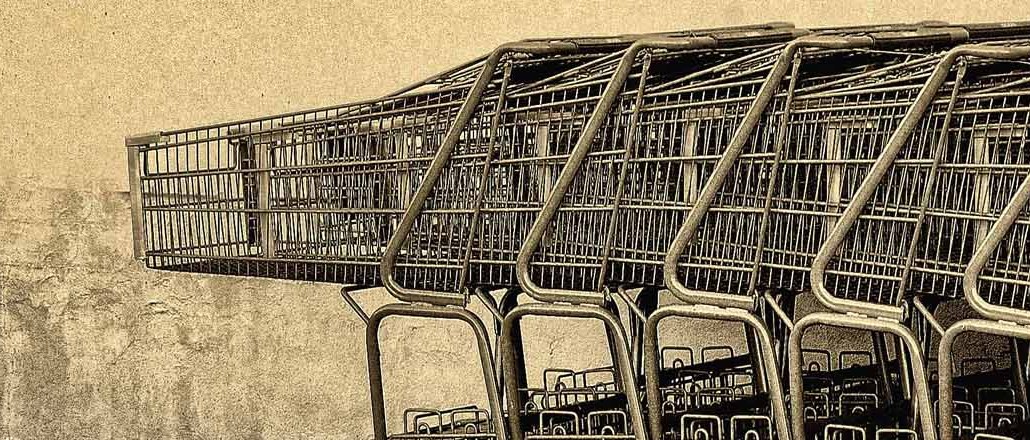Nine passes left to attend the Digiday Publishing Summit
Op-ed: Black Friday, Shmack Shmiday. There are still plenty of deals on mobile

Nick Jones is evp of innovation and growth, Leo Burnett/Arc
Black Friday is over and Cyber Monday are ancient history. We’re 10 days away from Christmas and I’m nowhere near finished with holiday shopping. And that’s OK. I can still get the deals I want, when I want, all the way through December 25.
Scoring the best deals no longer means participating in one sleep-deprived, caffeine-fueled shop-athon. You can complete holiday shopping by planning a steady drumbeat of in-store and online “shopping sprints.” The majority of actual buying takes place later in the holiday season, according to Google. Why? There’s no rush — every day is a shopping day.
And on those shopping days, 90 percent of sales will still happen in the physical store and 82 percent of smartphone users will consult their phone while in a store. In addition, more and more retailers are finding that shoppers are using their phones for research before hitting a store. For instance, Target found three-quarters of its customers start their experience on a mobile device.
Case in point, the smartphone is without a doubt shoppers’ most important partner this holiday season, not just for online purchases but in-store too. Ensuring shopping helps, not hinders actual shopping is extremely important for brands and retailers.
According to Accenture, consumers visiting brick-and-mortar stores this holiday season say there are three factors that would enhance their in-store shopping experience: Uber-personalized digital coupons; being able to touch, feel and experience items in person before buying, and seamless in-store operations such as short lines and quick service.
There are some retailers, brands and startups that are out in front when it comes to satisfying shoppers as they go about their holiday shopping.
On the digital coupon and deals front, ShopSavvy and shopkick lead the way. ShopSavvy is a top tool for price comparison in-store. Simply scan a product barcode, and easily find the lowest price and receive alerts for new price cuts and sales you might have otherwise missed. Retailers such as Walmart and Best Buy will smartly match any lower price to close the deal in-store.
Another smartphone app for scoring in-store deals is shopkick. Retailers such as Crate and Barrel and Macy’s utilize shopkick to provide exclusive deals, discounts and “kick” points simply for stepping foot in the store.
And why do people come to a store? To experience a product before buying it, of course.
Sixty-nine percent of shoppers are likely to participate in “webrooming” this holiday season, which means they shop for products online but make the final purchase in-store. This means brands and retailers need to create interactive environments that draw people in, entices them to stay a while and ultimately leads to bigger sales. The new MUJI store in New York City does just this. Shoppers can relax in the lounge, create their own scent in the lab and customize a new sweater.
Not everyone wants the full-on retail experience. Some people just want to get in and get out, the faster the better. Two brands on the front lines of creating seamless experiences for shoppers include hot new mobile app Curbside and MasterCard. Curbside makes it super easy to pick up products on your holiday wish list at nearby stores such as Target. Once purchased, drive to the nearest store, pull up to the curb, pop the trunk and Curbside employees load your gifts without you stepping foot outside your vehicle.
MasterCard recently launched a new program that will allow tech companies to create gadgets such as smart rings, car keys and fitness trackers that can also be used to make credit card payments in stores, just like most new smartphones can with programs like Samsung Pay, Apple Pay and Android Pay. (Add Samsung Pay since they’re a client?)
And a bit further in the future, the world’s first biometrically authenticated wearable credit card is on its way. MasterCard is partnering with Nymi to create a wristband that authenticates payments by using your own unique heartbeat. You’ll also be able to use it to check into your hotel room after that long day of holiday shopping.
No matter how you like to shop, as long as you have your (fully charged) smartphone with you the entire holiday shopping season, your experience can be all about you as you shop for others. With the right apps, retailers and brands, you’re bound to have a personalized, price-reduced, pain-free day.
More in Marketing

‘Consumers are dying to get out of their houses’: How Cinemark’s CMO is getting people back to the movies
A look at how consumer demand looks in the movie industry and what other retailers can learn from Cinemark’s loyalty and membership programs.

Platform and agency execs recommended must-reads to unwind during busy periods
Senior execs from the likes of TikTok, Snap, OMD USA, Publicis London and more let us in on their favorite page-turners to unwind.

In Graphic Detail: AI adoption increases, but U.S. consumers are still wary
Digiday has charted the rise of generative AI, big tech’s investment into AI as well as agencies’ top use cases and consumer sentiment.





